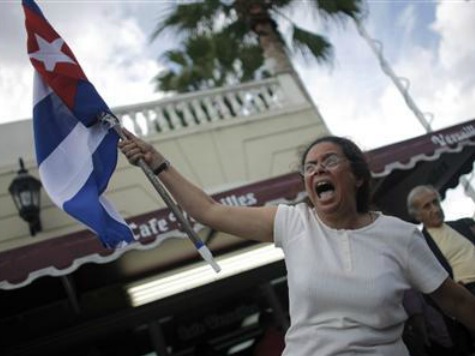Out of every 100,000 people in the island nation of Cuba, 16.3 commit suicide, the highest rate of any country in the Americas in 2009.
According to a study by the Pan-American Health Organization (PAHO)–the regional subdivision of the World Health Organization (WHO)–Cuba is rivaled only by the “non-Hispanic Caribbean” in suicide rates.
The report, titled “Suicide Mortality in the Americas,” uses two different time subdivisions to compare suicide rates in North and South America: the average of suicide rates between 2005-2009 and the data available for the last year in which that country provided statistics. In the former category, all of the Americas fare better than the global average for suicide, and Cuba’s average pales in comparison to Guyana and Suriname (23.44 and 22.79 per 100,000 people, respectively). Statistics provided for the last available year, however, show Cuba’s suicide rate high above other nations. For comparison, Guyana recorded 16.04 suicides per 100,000 people, while Suriname recorded 14.79 in the same year.
The United States recorded 11.38 suicides per 100,000 population in 2009. Jamaica recorded 0.30 per 100,000. The lowest suicide rate that year in the Americas was recorded in Haiti, where only 0.05 people per 100,000 took their own lives.
According to the Cuban dissident news outlet Martí Noticias, the vast majority of people who commit suicide in Cuba choose to do so by asphyxia (71.6%). Poison is in second place (10%), while a surprising 9.2% self-immolate.
The PAHO notes that their information is reliable but ultimately incomplete, as they must rely on government figures provided to them, and countries often differ on what kinds of deaths to classify as suicides. “The validity of reported cases can be obscured by cultural and religious factors, as well as by the stigmaattached to those who take their own lives. … There are legal differencesbetween the countries regarding which deaths should be classified as suicides,” the authors note in the study. PAHO researchers and group leaders agree that one of the main objectives of their study is to begin treating suicide not as a stigmatized action, but as an often-preventable tragedy triggered by a host of negative factors that should be individually targeted.
Cuba’s current political situation–nearly unchanged in more than half a century–is largely to blame, both for the psychological and economic hardship that many on the island endure. The Castro dictatorship has intensified many of its abuses in 2014, particularly the arrest of prisoners of conscience for peaceful public declarations of opposition to communism. Some prominent members of the dissident community reported this summer, when arrests peaked, that they were being arrested almost weekly. In another harrowing display of police power this year, about 100 women were arrested for taking part in a Catholic mass to pray for Cubans who were killed by the Cuban government for attempting to travel to America during the 13 of March Tugboat Massacre.
For Cubans who are not politically or religiously active, the economic situation appears only to worsen with time. The Castro dictatorship has begun implementing more restrictions in its embargo on the United States, preventing Cuban Americans from sending certain amounts of necessary goods to their relatives on the island, including soap and underwear. The economic deterioration has led to a surge of refugees attempting the dangerous sea route off the island to the United States.

COMMENTS
Please let us know if you're having issues with commenting.